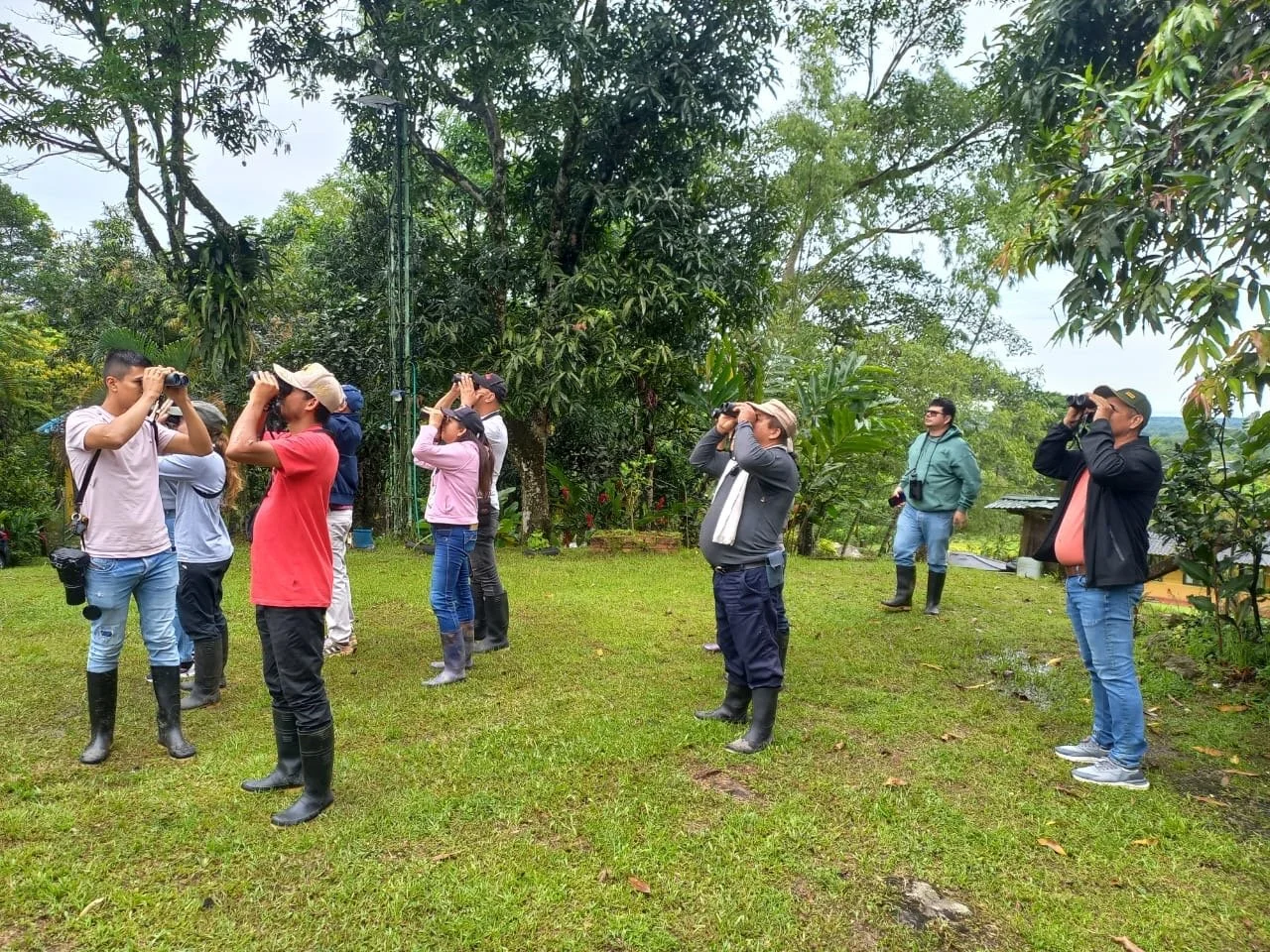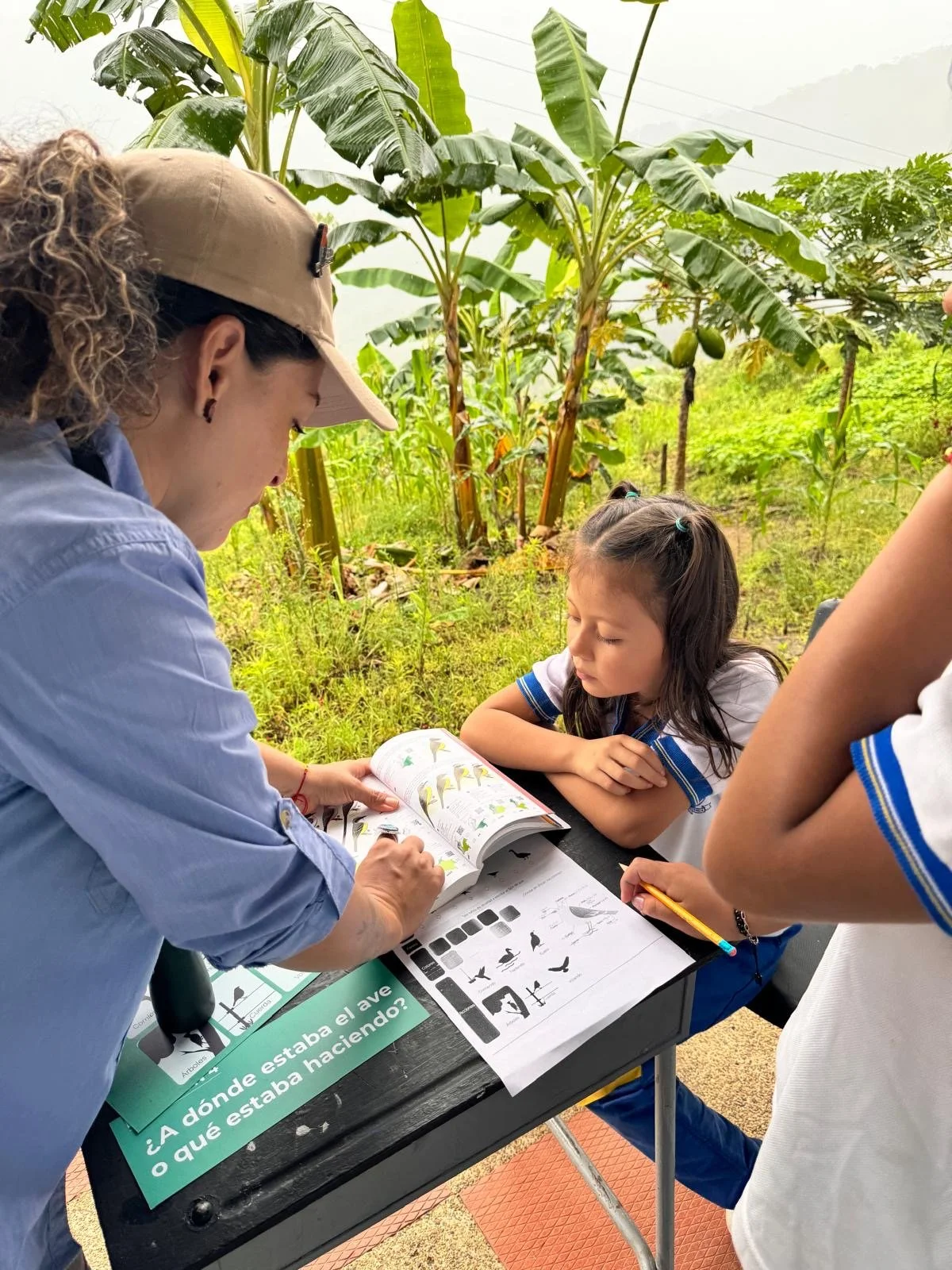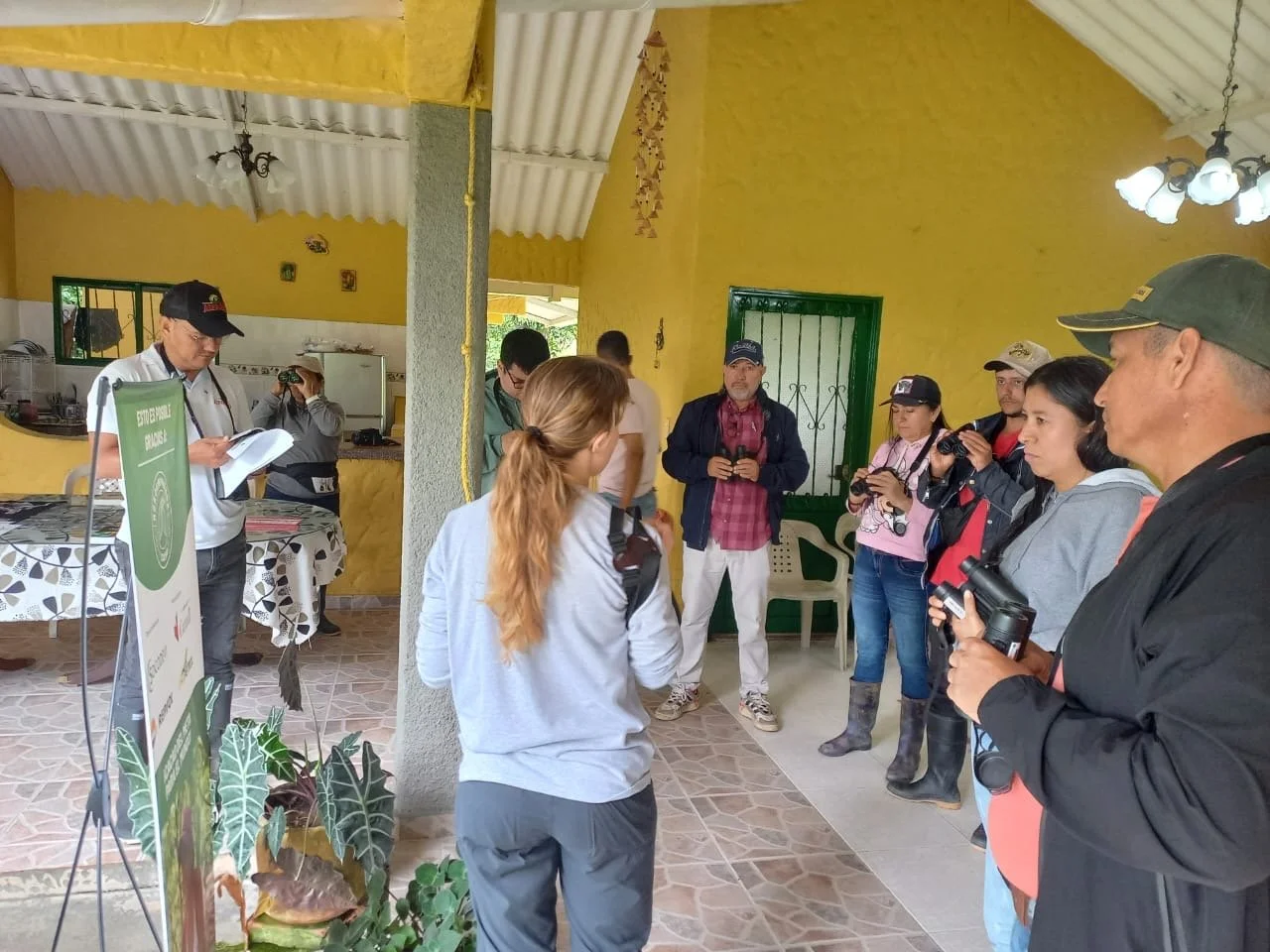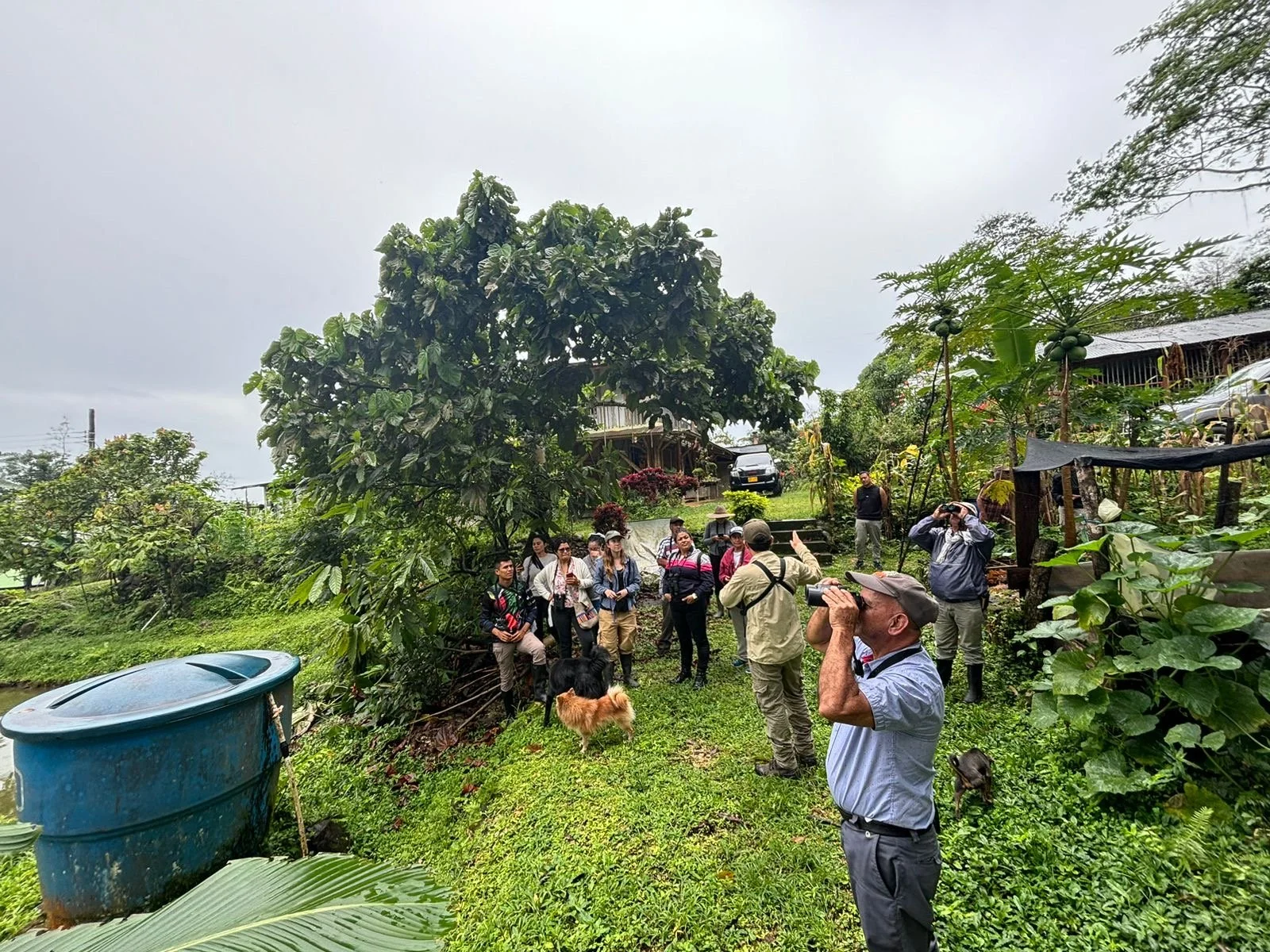Many of our favorite songbirds spend about half their lives living in the forests and agricultural areas of Central or South America. This year we were proud to support the study and conservation efforts of many of these species. With a specific focus on migratory birds and shade trees of cacao farms in the Columbian Andes. Raleigh native and graduate of North Carolina State University, Vanessa Merritt, worked with SELVA, a Colombian NGO focused on bird research and conservation, and the Smithsonian Migratory Bird Center to conduct research in three field sites from September 2024 to May 2025.
Vanessa and Catherine, her local field assistant.
Birds and shade trees in cacao farms - Vanessa Merritt
Every year in the fall, birds that breed in North Carolina’s Appalachian Mountains make the hundreds-mile long journey by wing to reach Latin America. These birds spend nearly half of their lives in the forests and agricultural systems of Central and South America, and a key part of conservation for species in decline like Cerulean Warblers is to understand their specific habitat requirements across their breeding and nonbreeding ranges. Over 90% of the Cerulean Warblers breeding in the Blue Ridge Mountains migrate to the Andes of Colombia and Venezuela every year (Raybuck 2022), making habitat conservation and restoration in this region of South America critical for this charismatic migrant.
Cacao farms (fincas, in Spanish) in the Colombian Andes offer potential overwintering habitat for North Carolina’s sky-blue Cerulean Warblers, fiery American Redstarts, and other migratory bird species. Cacao, whose fruit is crafted into the chocolate that we know and love, is a plant originally from the rainforests of Latin America and is often cultivated in small, shade-grown farms. These shade-grown fincas act as little patches of forests for migratory and resident birds. In fact, farms with 30-40% of shade cover can have an equal diversity of bird species as surrounding forested areas (Bennett et al. 2022). But the species of shade trees matter: non-native trees do not provide the same food resources like insects, fruits, and nectar for birds as native trees (Peters et al. 2016). A Raleigh native and graduate of North Carolina State University, I worked to tackle this gap in our understanding of which shade trees in cacao farms provide the most food resources to migratory and resident birds. I worked with SELVA, a Colombian NGO focused on bird research and conservation, and the Smithsonian Migratory Bird Center to conduct research in three field sites from September 2024 to May 2025.
a Finca
To understand which native shade trees support the most bird species richness and abundance, I first marked ~300 shade trees of 13 species across my three field sites. Each field site was a cluster of shade-grown cacao farms along the foothills of the eastern Andes. I worked with a research assistant, Catherine Acosta, Santa María native and local bird/nature guide, to conduct the field work. We collected data on all of the bird species that visited the marked trees from October 2024 until April 2025.
Cerulean Warbler in North Carolina.
A typical day for us began at 5am or earlier, when we woke to the trill of a Tropical Kingbird or the raucous laughter of Speckled Chachalacas, then hiked out to the first tree of the day to start surveys by 6am. For each survey, we stared at a shade tree for 10 minutes and recorded data on every bird species that entered the tree, including how long the birds stayed and if they ate insects, fruit, or nectar. We conducted these surveys nearly every day of the week, from 6:00-11:00 am and 2:45-6:00 pm, and worked on data management during the downtime of the field days. We were always overjoyed to see Cerulean Warblers eating insects off of the leaves of the shade trees, or American Redstarts flicking through the vegetation with their bright wing and tail patches. Over the course of the seven months of field work, we saw hundreds of Blackpoll Warblers visiting their favorite tree species, Mimosa trianae, a leguminous tree endemic to Colombia that is on IUCN’s Endangered List. Blackpolls would often spend the entire ten minutes of the survey plucking insects off of Mimosa trianae’s fine compound leaves. Clearly, the shade trees on cacao farms provide vital resources for these migratory warblers.
Farmers using their binoculars.
During the thick of data collection, two interns, Cristian Ramirez (Universidad Militar Nueva Granada in Bogota) and Jonathan Orozco (Universidad de Caldas in Manizales), processed the information into an Excel sheet containing the thousands of bird observations for each study tree species. In April, I began analyzing the data to understand which shade tree species provide the most food resources for migratory and resident birds. I then worked with my team to conduct interactive workshops with cacao farmers at each field site, where the team and I trained the farmers to use binoculars, walked around the farms to look at birds and trees, and ended with a presentation of the study findings. The goal is for these farmers to increase the number of bird-friendly trees in their farms and spread their knowledge to other farmers in the region. I will now be working to publish my results so that chocolate eco-certification and Neotropical reforestation programs in South America can promote these key native tree species in Colombia and beyond.
Thank you to funding partners T. Gilbert Pearson Audubon Society, Association of Field Ornithologists, British Ecological Society, and Smithsonian Bird Friendly for making this research possible.
Literature Cited:
Ruth E. Bennett, T. Scott Sillett, Robert A. Rice, Peter P. Marra. (2022). Impact of cocoa agricultural intensification on bird diversity and community composition. Conservation Biology, Volume 36, e13779. https://doi.org/10.1111/cobi.13779
Valerie E. Peters, Tomás A. Carlo, Marco A. R. Mello, Robert A. Rice, Doug W. Tallamy, S. Amanda Caudill, Theodore H. Fleming. (2016). Using plant–animal interactions to inform tree selection in tree-based agroecosystems for enhanced biodiversity. BioScience, Volume 66, Issue 12, Pages 1046–1056, https://doi.org/10.1093/biosci/biw140
Douglas W Raybuck, Than J Boves, Scott H Stoleson, Jeffery L Larkin, Nicholas J Bayly, Lesley P Bulluck, Gregory A George, Kate G Slankard, Laura J Kearns, Sharon Petzinger, John J Cox, David A Buehler. (2022). Cerulean Warblers exhibit parallel migration patterns and multiple migratory stopovers within the Central American Isthmus. Ornithological Applications, Volume 124, Issue 4, duac031, https://doi.org/10.1093/ornithapp/duac031








